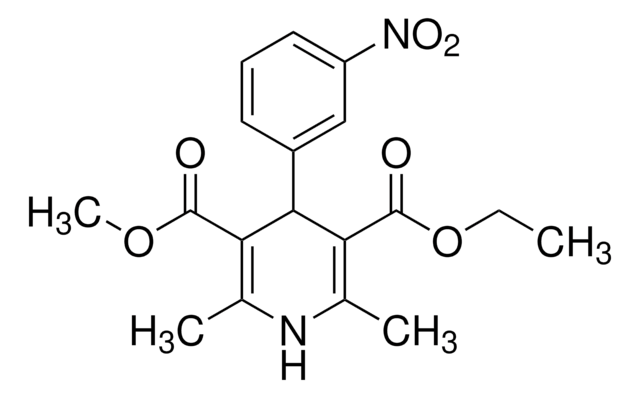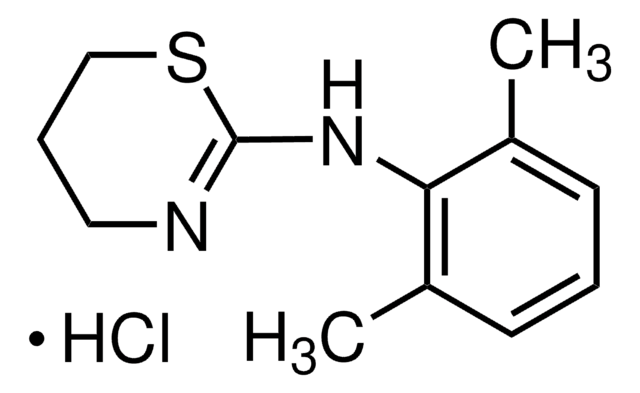N149
Nimodipine
Synonyme(s) :
1,4-Dihydro-2,6-dimethyl-4-(3-nitrophenyl)-3,5-pyridinedicarboxylic acid 2-methoxyethyl 1-methylethyl ester, Isopropyl 2-methoxyethyl 1,4-dihydro-2,6-dimethyl-4-(m-nitrophenyl)-3,5-pyridinedicarboxylate
About This Item
Produits recommandés
Pureté
≥98% (HPLC)
Forme
powder
Couleur
off-white to yellow
Solubilité
methanol: 62.5 mg/mL
45% (w/v) aq 2-hydroxypropyl-β-cyclodextrin: insoluble
H2O: insoluble
Auteur
Bayer
Chaîne SMILES
COCCOC(=O)C1=C(C)NC(C)=C(C1c2cccc(c2)[N+]([O-])=O)C(=O)OC(C)C
InChI
1S/C21H26N2O7/c1-12(2)30-21(25)18-14(4)22-13(3)17(20(24)29-10-9-28-5)19(18)15-7-6-8-16(11-15)23(26)27/h6-8,11-12,19,22H,9-10H2,1-5H3
Clé InChI
UIAGMCDKSXEBJQ-UHFFFAOYSA-N
Informations sur le gène
human ... ADORA3(140) , CACNA1C(775) , CACNA1D(776) , CACNA1F(778) , CACNA1S(779) , CACNG1(786) , NR3C2(4306)
rat ... Adora1(29290) , Adora2a(25369)
Vous recherchez des produits similaires ? Visite Guide de comparaison des produits
Application
- as a L-type calcium channel (LTCC) inhibitor, to evaluate its neuroprotective activity in the vibrosections
- as a standard, in the enantioseparation of chiral drugs by high performance liquid chromatography (HPLC)
- in the pharmacological studies for the measurement of spine voltage escape
Actions biochimiques/physiologiques
Caractéristiques et avantages
Attention
Mention d'avertissement
Warning
Mentions de danger
Conseils de prudence
Classification des risques
Acute Tox. 4 Oral
Code de la classe de stockage
11 - Combustible Solids
Classe de danger pour l'eau (WGK)
WGK 1
Point d'éclair (°F)
Not applicable
Point d'éclair (°C)
Not applicable
Équipement de protection individuelle
dust mask type N95 (US), Eyeshields, Gloves
Certificats d'analyse (COA)
Recherchez un Certificats d'analyse (COA) en saisissant le numéro de lot du produit. Les numéros de lot figurent sur l'étiquette du produit après les mots "Lot" ou "Batch".
Déjà en possession de ce produit ?
Retrouvez la documentation relative aux produits que vous avez récemment achetés dans la Bibliothèque de documents.
Notre équipe de scientifiques dispose d'une expérience dans tous les secteurs de la recherche, notamment en sciences de la vie, science des matériaux, synthèse chimique, chromatographie, analyse et dans de nombreux autres domaines..
Contacter notre Service technique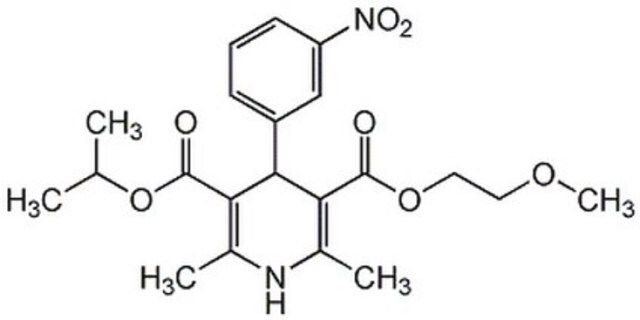
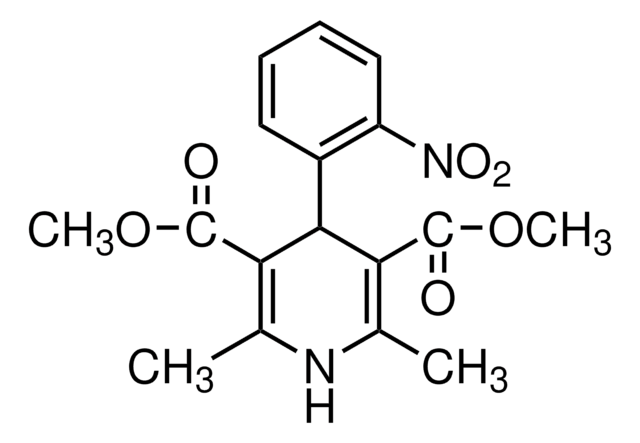
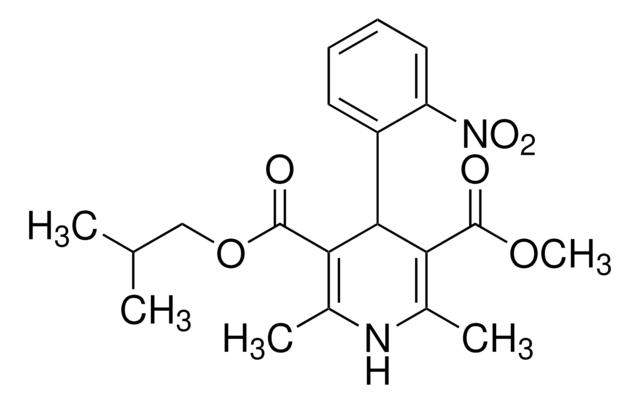
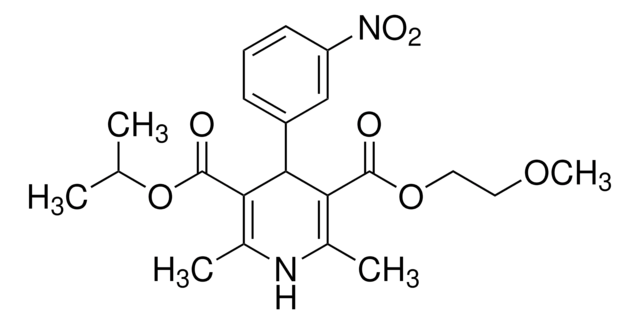
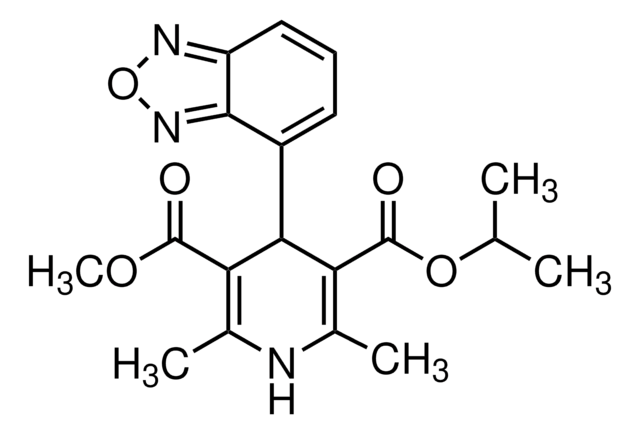

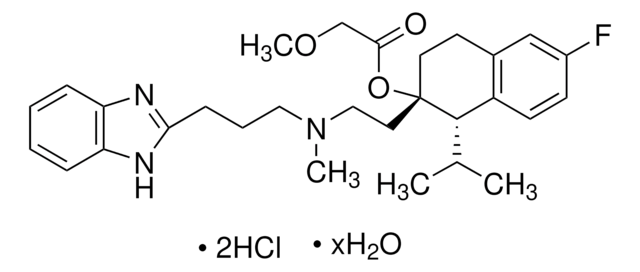
![N(1)-dodecyl-N(3)-[3-(dodecylamino)propyl]-1,3-propanediamine AldrichCPR](/deepweb/assets/sigmaaldrich/product/structures/184/200/68c42cb5-3811-47e2-9f1f-8987743b0fce/640/68c42cb5-3811-47e2-9f1f-8987743b0fce.png)
